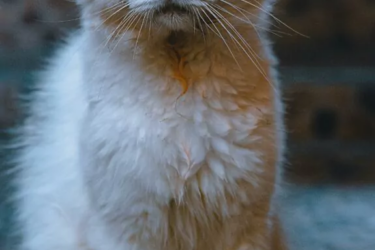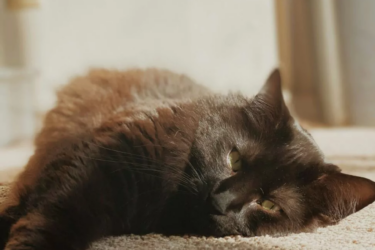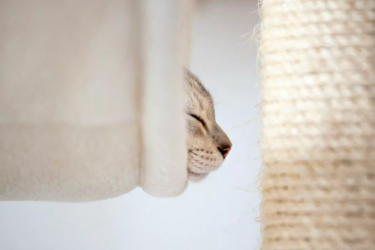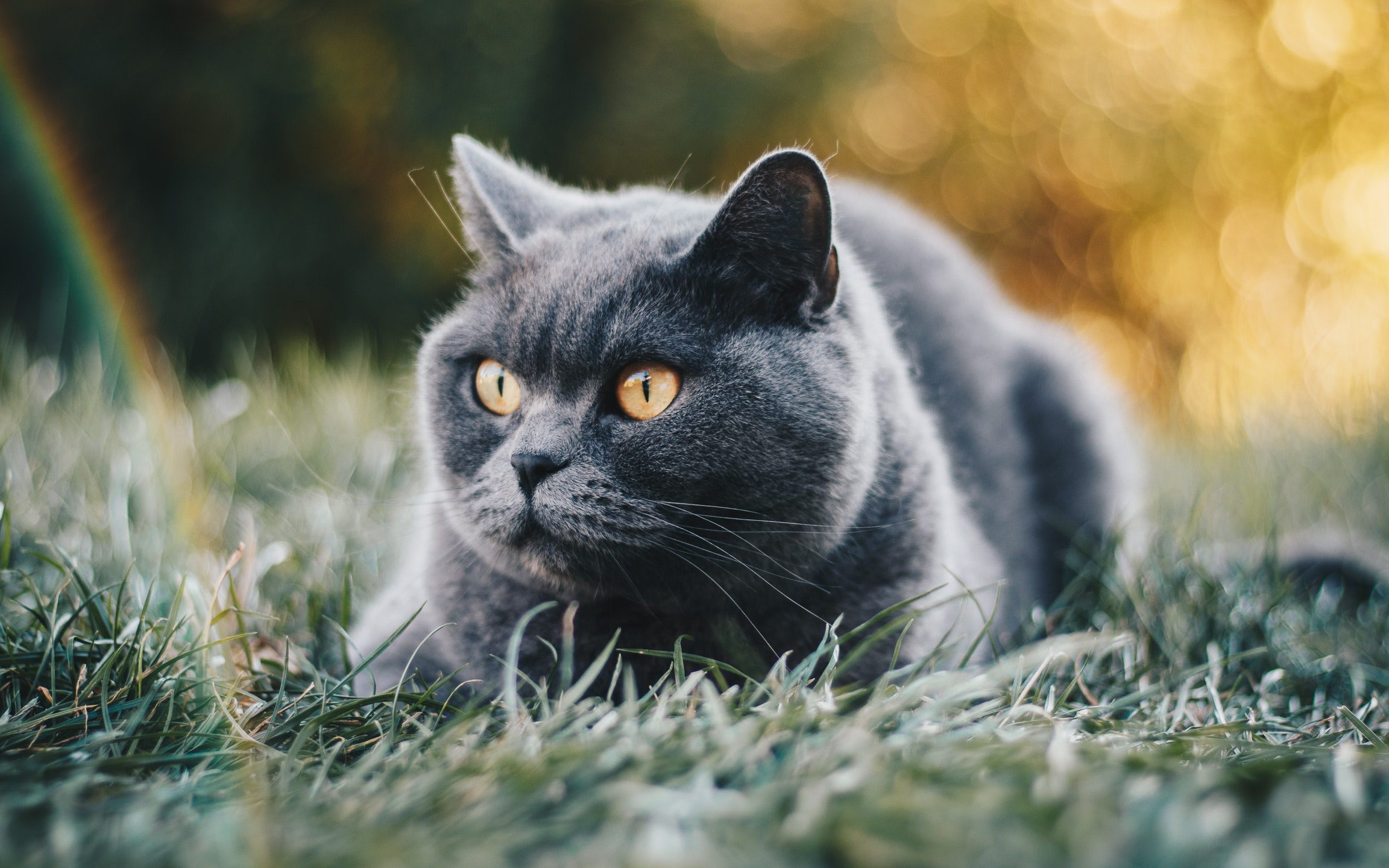
A gentle temperament, a beautiful velvety coat, and large eyes. These are all characteristics of a British Shorthair. A calm breed of cat that easily adapts to any family situation. Dogs, children, or other cats – the British is fine with all of them.
In this blog:
- The origin of the British Shorthair
- The appearance of the British Shorthair
- The coat of the British Shorthair
- The character of the British Shorthair
- The care of the British Shorthair
- The health of a British Shorthair
- How long does a British Shorthair live?
- Want to buy a British Shorthair?
- Fun facts about the British Shorthair
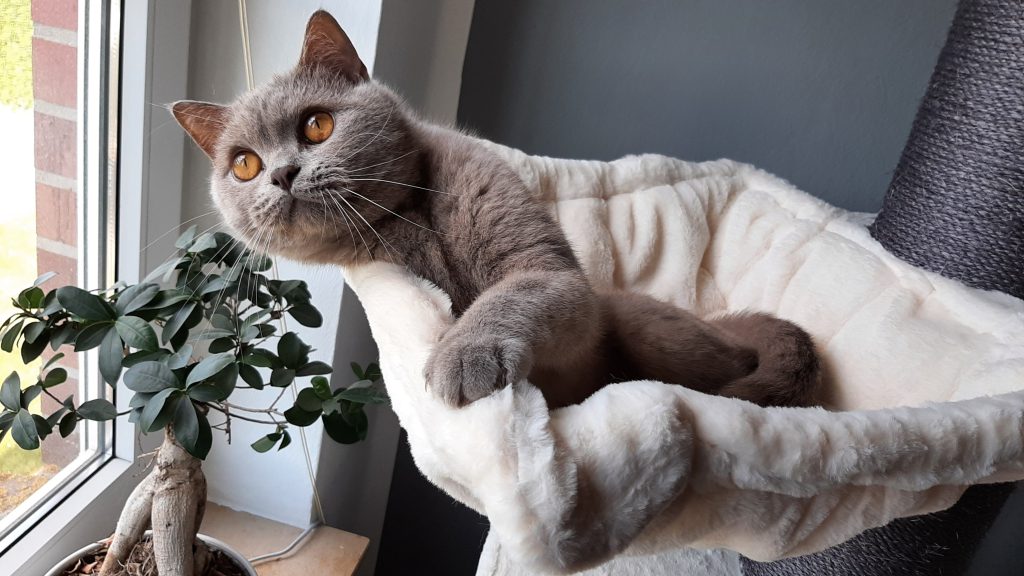
1. Origin of the British Shorthair
The ancestors of this breed were most likely brought to England by the Romans to catch mice. At that time, it was not yet an officially recognized breed, so the origin of the British Shorthair lies in Great Britain. The breed was first showcased at an official cat show in 1871.
During World War II, things got a bit tense. Due to food shortages, breeders had trouble feeding the litters, which nearly led to the end of this sweet cat breed. But fortunately, it had a happy ending. The breed was crossbred with Persian Longhairs, Russian Blues, and ordinary domestic cats to keep the breed alive. From there, the British Shorthair as we know it today emerged.
These cat trees are perfect for British Shorthair cats!
2. Appearance of the British Shorthair
British Shorthairs are generally compact, muscular, and robustly built. They are medium to large-sized cats – males can weigh up to seven kilograms and have well-developed jaws. Females are slightly smaller, weighing at least three and a half kilograms but no more than five kilograms.
A British Shorthair has a round and broad head with pleasantly full cheeks, a wide and short nose, and a sturdy chin. The ears are small and rounded, with strong hair on the inside. The eyes of British Shorthairs are large and set wide apart. The color is usually bright orange, but green and blue eyes are also common, as well as British Shorthairs with two different colored eyes.
British Shorthairs are muscular, with a short and strong neck, and their back and shoulders are strong. They have short legs, and their tail is broad with a rounded end.
Fun fact: The shape of the eyes and the woolly coat of the British Shorthair are thanks to its crossbreeding with the Persian Longhair.
3. The coat of the British Shorthair
This breed is not called the “Teddy Bear of cat breeds” for nothing. British Shorthairs have a thick undercoat, and the rest of the coat is fine and densely planted. As a result, the coat stands a bit away from the body, and this breed feels wonderfully soft to the touch.
In terms of colors, British Shorthairs come in a variety of options. Although this breed was initially mostly gray-blue, these cats are now available in countless colors.
Full Colour: The most common color is still gray-blue, but British Shorthairs are now available in many solid colors, such as lilac, chocolate, cream, black, red, and white.
Tortie: British Shorthairs with this coat type have two colors that are spread across their entire body. The most common combinations are black/red, blue/cream, chocolate/red, cinnamon/red, and lilac/cream.
Tabby: A British Shorthair is called a ‘tabby’ if it has a pattern on its coat. The pattern is most often recognized by an M-shaped mark and rings at the tip of the tail.
Color Points: A Color Point British Shorthair is identified by a concentrated amount of color on areas like the face and the tips of the legs.
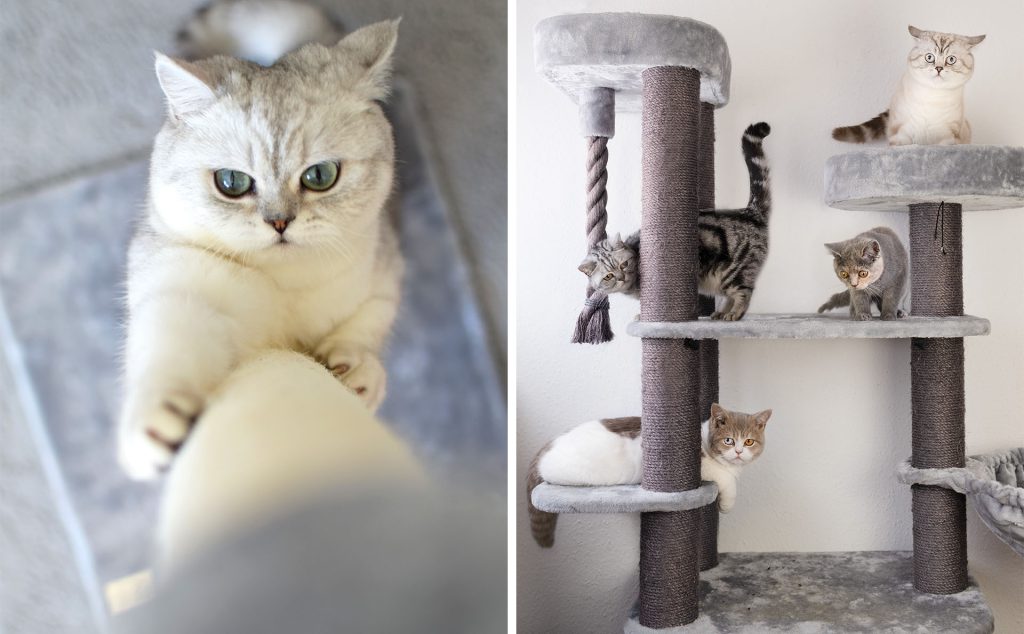
4. The character of the British Shorthair
British Shorthairs are not very active – they love to sleep and relax. But sometimes they have a burst of energy and will run around the house like crazy. In general, they can entertain themselves well when they’re alone. However, when you come home, they do appreciate it if you take time to cuddle and play with them actively.
From our fans: In KattenPraat, we interviewed Cindy about her British Shorthairs, Miró and Pebbles.
Furthermore, this breed is sweet and very social. British Shorthairs get along well with people, dogs, children, and other cats. It’s in their nature, but it’s important to start socializing them as early as possible. This way, they learn to accept strangers – although this breed will always be somewhat distant with people they don’t know. For their own family members, these cats are affectionate, sociable, and always up for a pet and cuddle. They’re not fond of being picked up or sitting on laps. They prefer to be close to you, just enjoying your company.
5. The care of the British Shorthair
It’s best to get a British Shorthair kitten used to brushing and combing right from the start. Due to the thick undercoat, it’s necessary to do this every week – preferably with a coarse metal comb and a slicker brush. During shedding periods – around April/May and September/October – it’s better to brush and comb the cats twice a week.
It’s also important to keep an eye on the weight of this cat. Because of its build, a British Shorthair can quickly appear quite large, so you might not notice if your cat gains weight. It’s a good idea to weigh a British Shorthair regularly and carefully measure its food.
Apart from that, a British Shorthair doesn’t require much, just proper care such as:
- A safe home
- Love and attention
- Fresh water and appropriate food every day
- One (or more) clean litter boxes
- Toys and a comfortable cat bed
- A cat tree suitable for a British Shorthair
- Protection against fleas, ticks, and worms
- At least one health check per year at the vet
- Necessary vaccinations
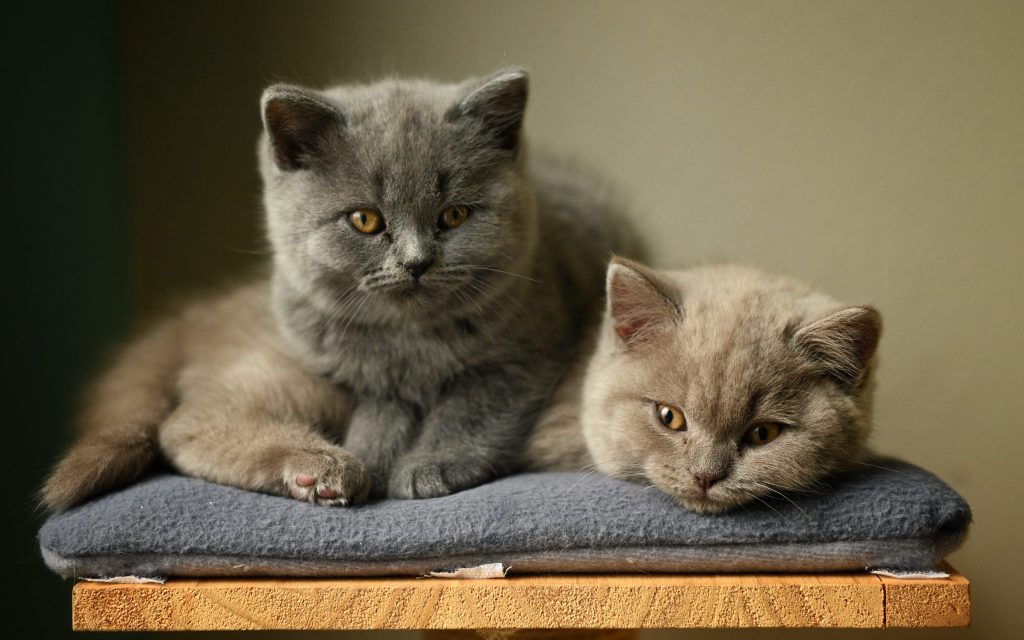
6. The health of a British Shorthair
Purebred cats are bred for unique characteristics. The British Shorthair also has traits that make it special, such as:
- A short and flat muzzle
- A broad and round head
- A thick coat and undercoat
Do you think a British Shorthair is a good fit for you? Then make sure to do thorough research about the health of this breed. Many purebred cats are prone to hereditary conditions. British Shorthairs, for example, have a high risk of developing Brachycephaly (due to their flat muzzle), which causes difficulties in breathing and pain. It is important to be aware of this.
If you want to bring a healthy cat into your home, ask a veterinarian for advice. You can also check the websites of Dier & Recht and the Dutch Food and Consumer Product Safety Authority for information on the health of the breed, whether it’s allowed, and what regulations apply to breeders.
Always buy a British Shorthair from a trustworthy breeder, preferably one who is a member of a breed association. This way, you can be sure that the cat is healthy and well cared for. Also, ask the breeder for a health certificate or guarantee for extra peace of mind.
7. How long does a British Shorthair live?
British Shorthairs live on average between fifteen and twenty years, and often without too many issues.
8. Buying a British Shorthair
Do you want to buy a British Shorthair kitten? Go to a recognized breeder, preferably one who is a member of a breed association. This way, you can be sure you’re buying a healthy, well-socialized cat that has been bred in a humane way. Always ask for the papers, a health certificate, and check the parents of the kitten. Also, take a look at the living conditions: is it clean and homely, and are the parents present? That’s a good sign. Don’t buy cats through Marktplaats, eBay, or unlicensed breeders.
A British Shorthair from a good breeder costs about 800 euros. If you’re looking for a cat, but it doesn’t need to be a pedigree, also consider checking shelters or adoption agencies. Many lovely cats are waiting for a good home.
And remember: you don’t have a cat for just a short time, but for its entire life. Are you willing to take good care of the animal and set aside money for its care and veterinary visits? Then a British Shorthair could very well become your new best friend!
Discover here what the care of a cat roughly costs
9. Fun facts about the British Shorthair
- The Puss in Boots character from the movie Shrek is often considered a British Shorthair by many viewers, despite his Spanish accent.
- The famous purple cat from Alice in Wonderland – ‘The Cheshire Cat’ – was drawn by illustrator Lewis Carroll after seeing a British Shorthair.The loudest purr in the world came from a British Shorthair named Smokey in 2011.
- This loud cat purred at 67.7 decibels, as loud as a lawnmower.
Also, read all about the Bengal!
Disclaimer: Petrebels does not consist of veterinarians or behavioral experts: all content, information and tips on this blog are intended to inspire and inform you. Does your cat have complaints or problems and do you have doubts about your cat’s health? Then always go to the vet or a behavioral expert.
